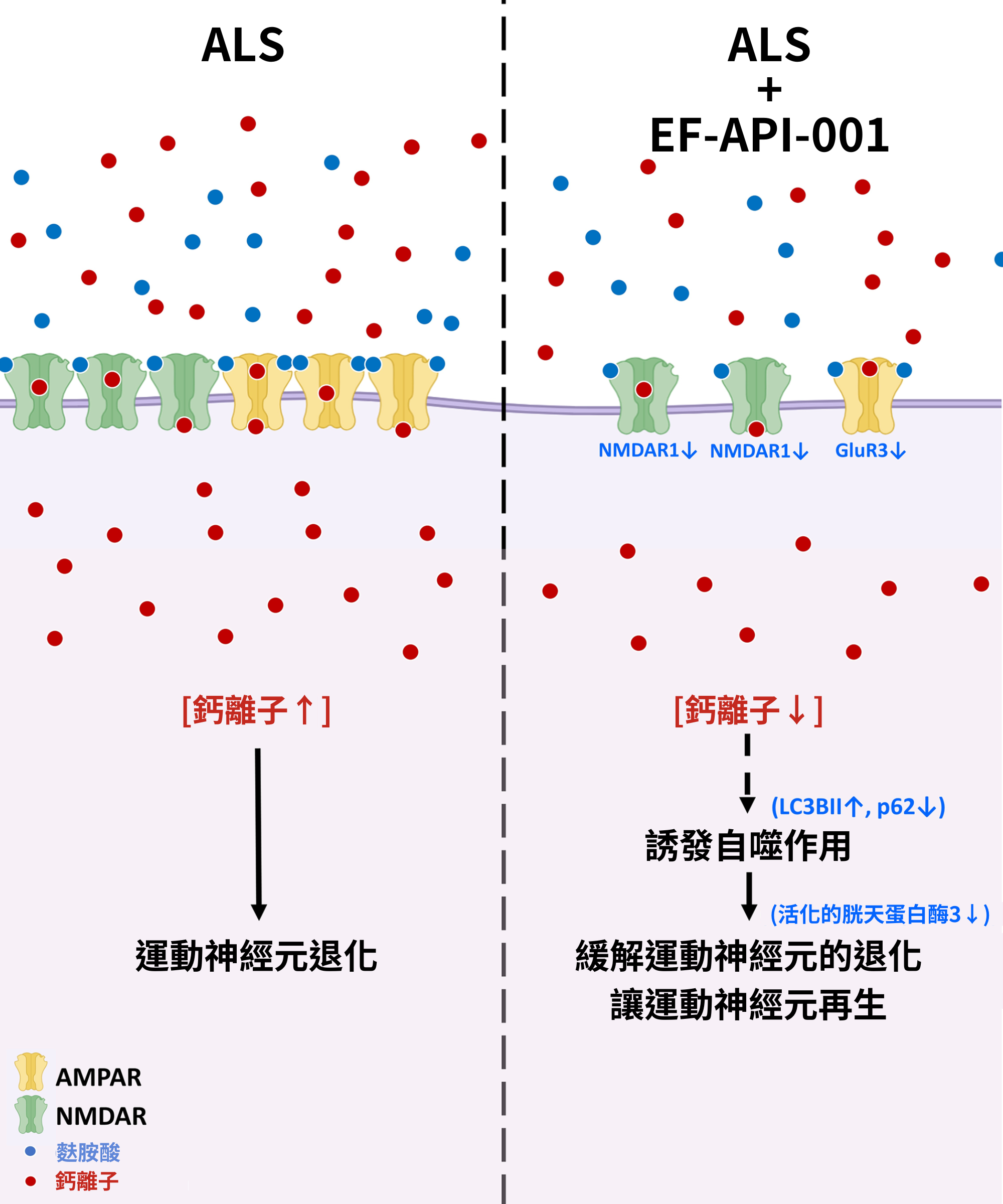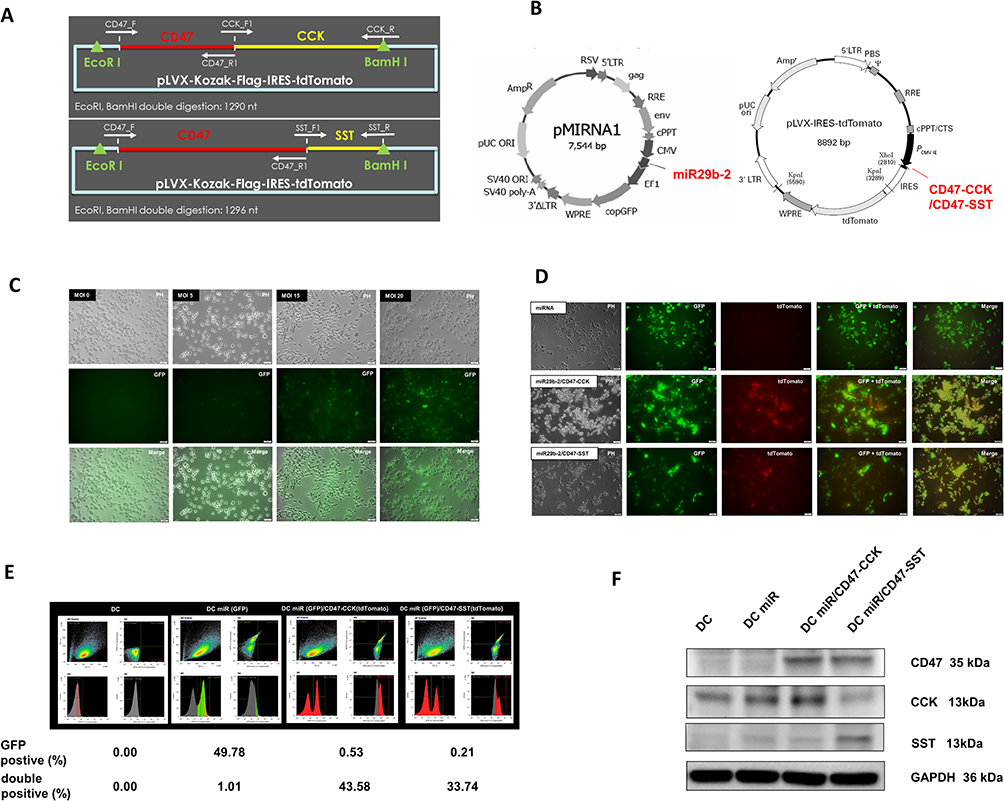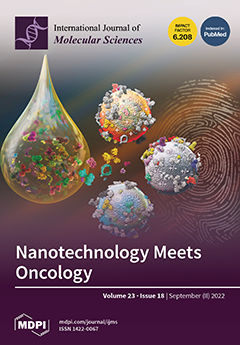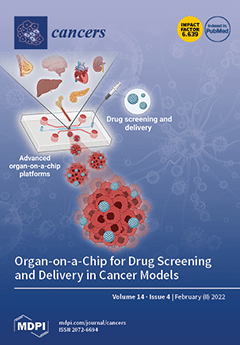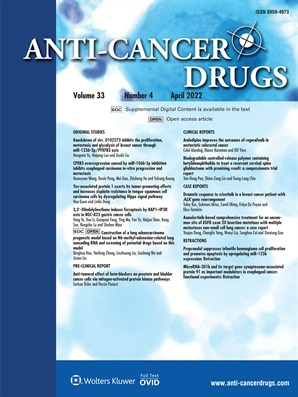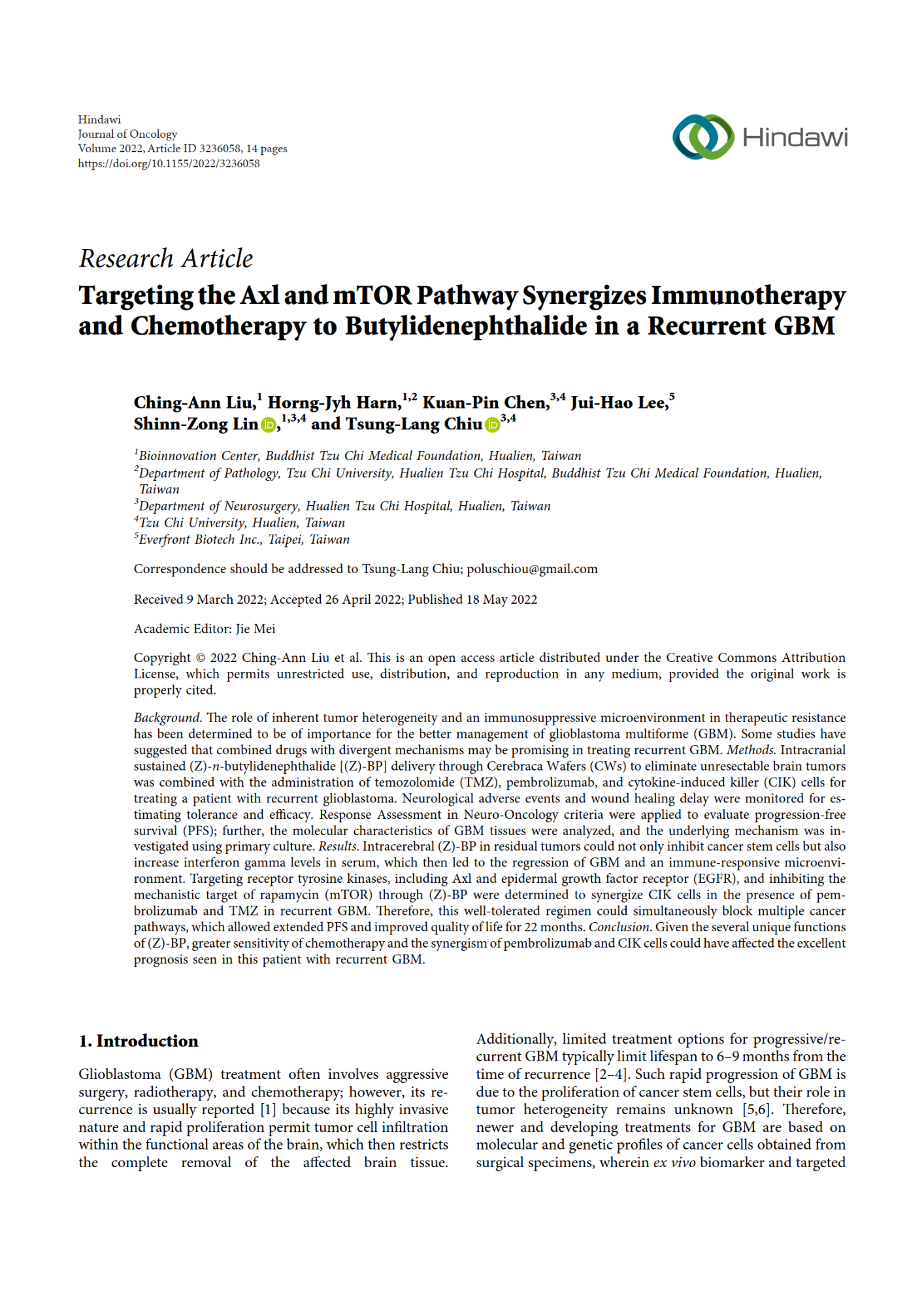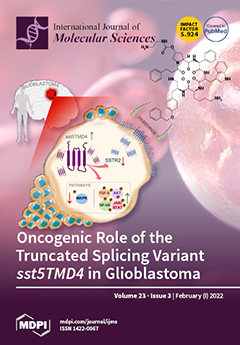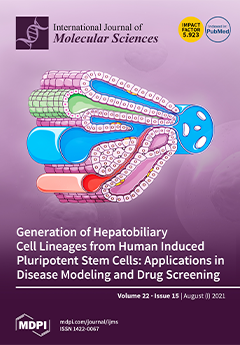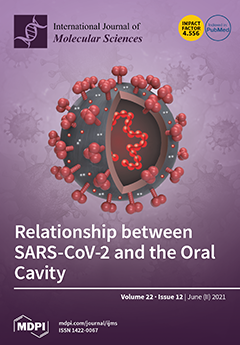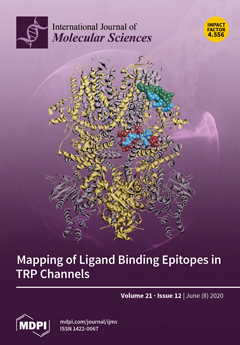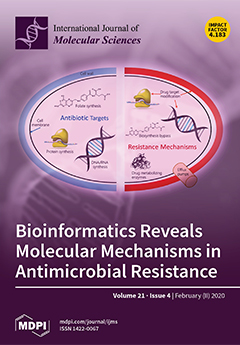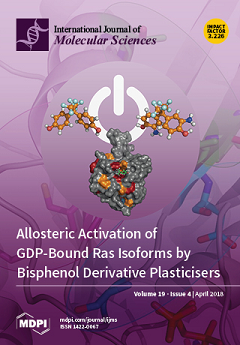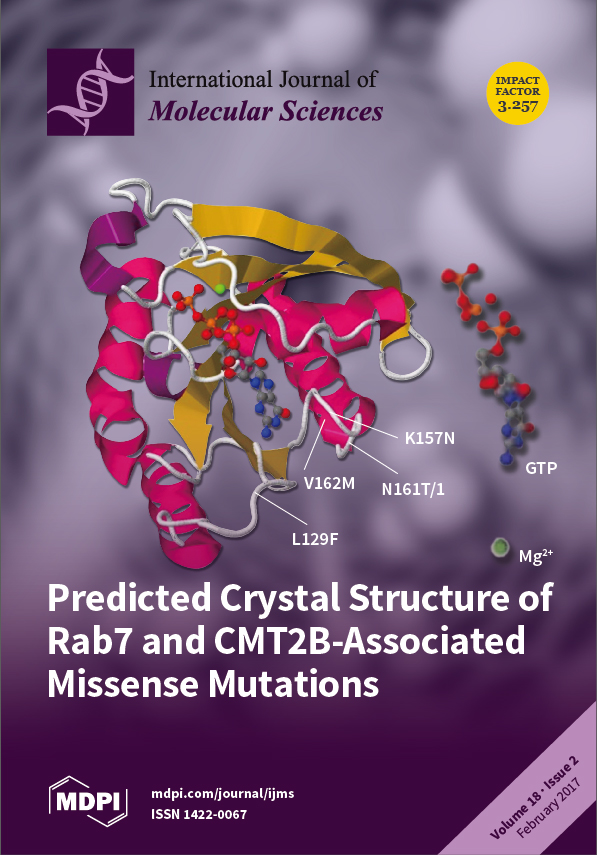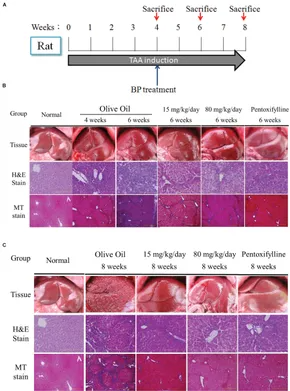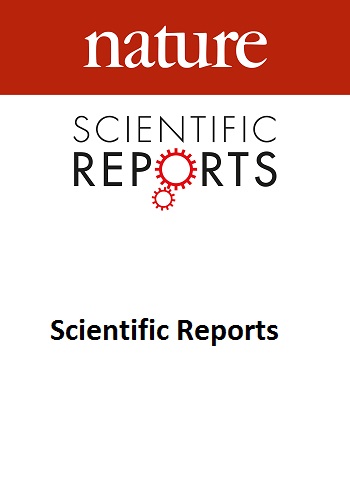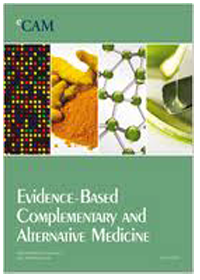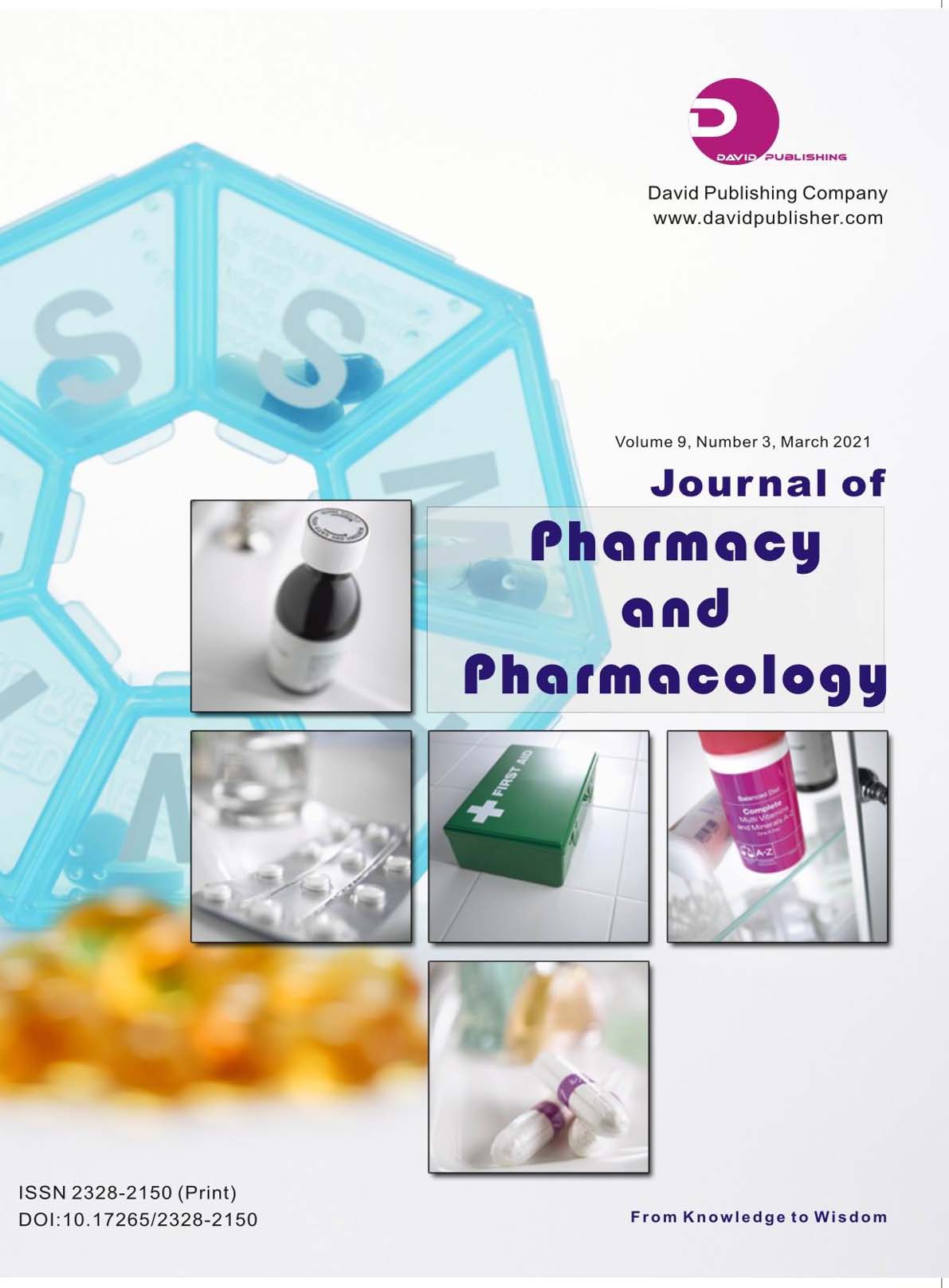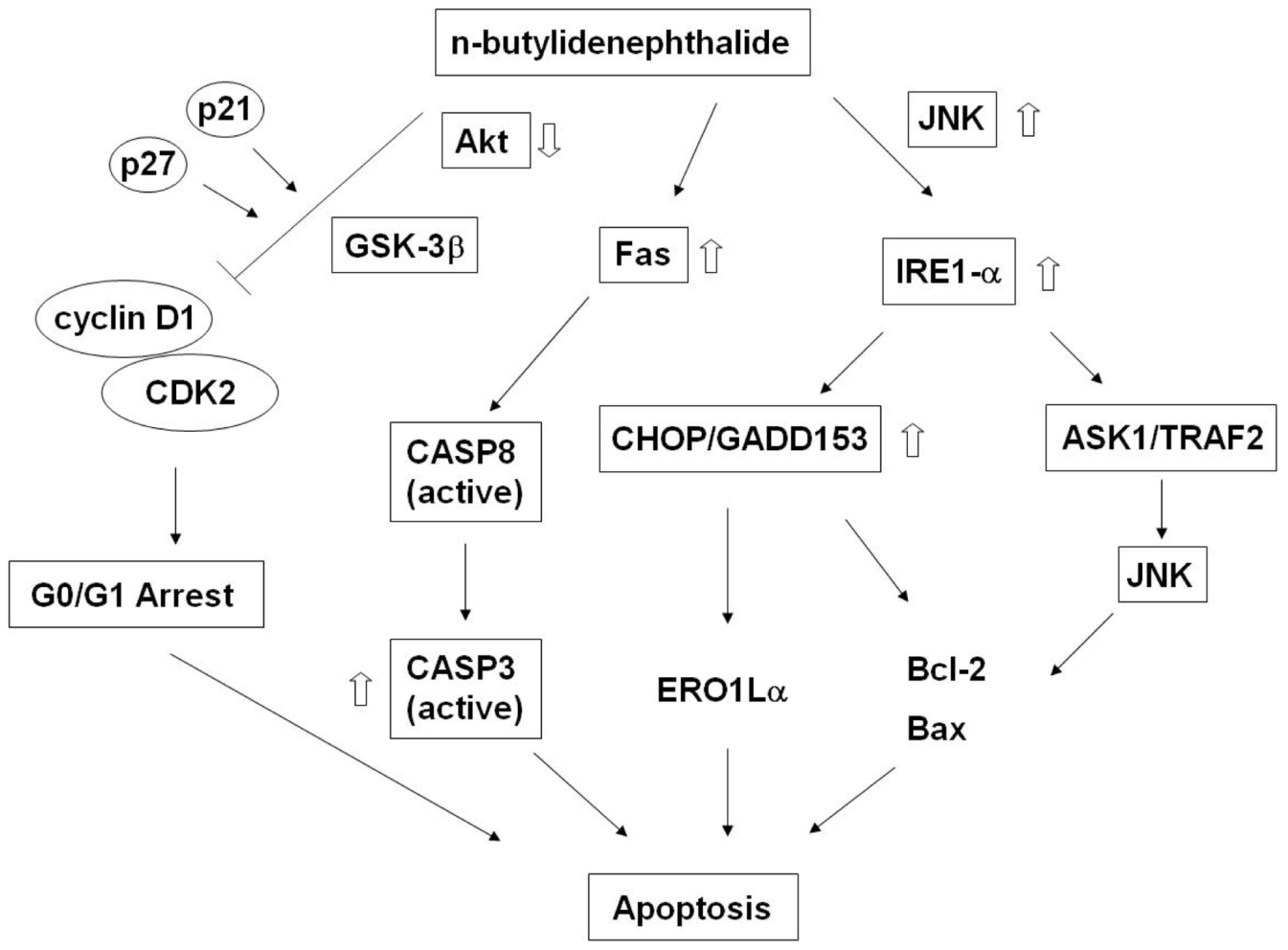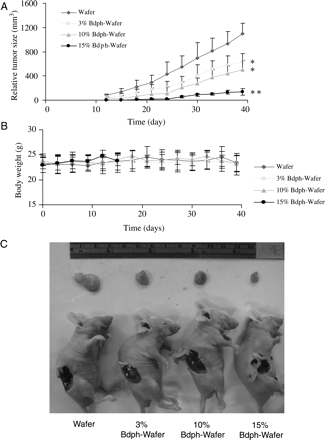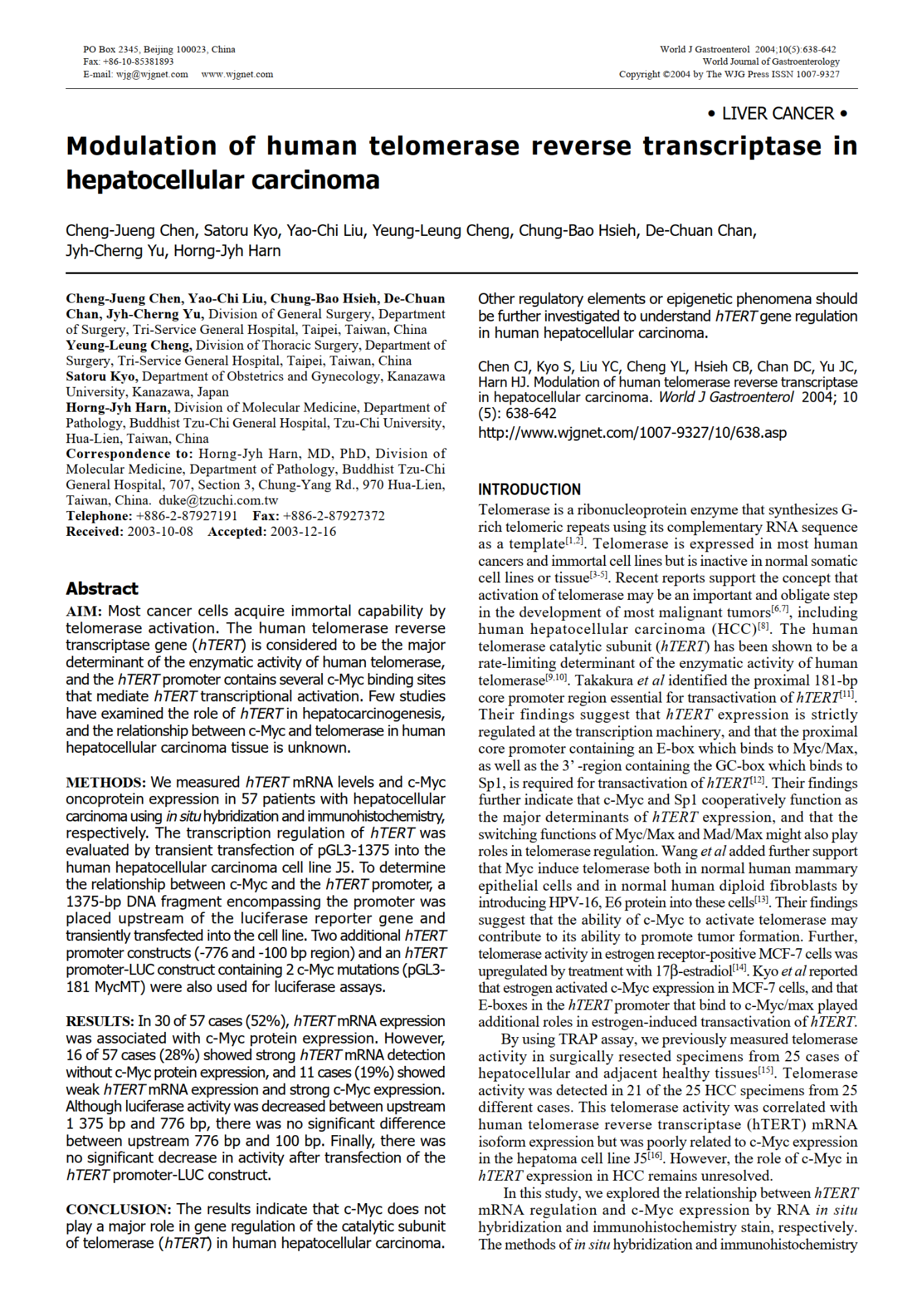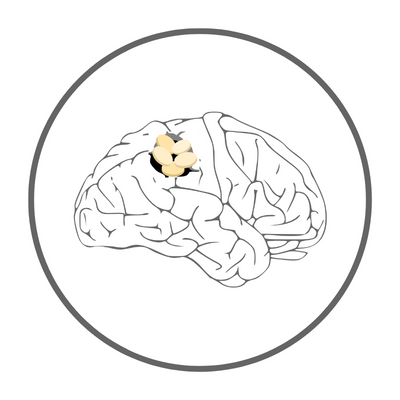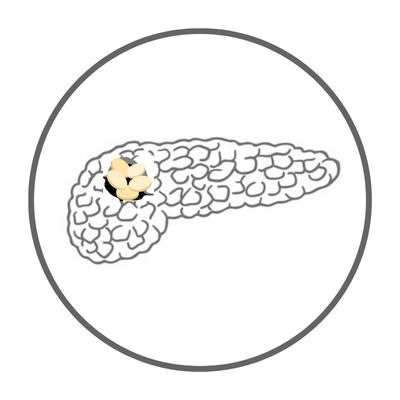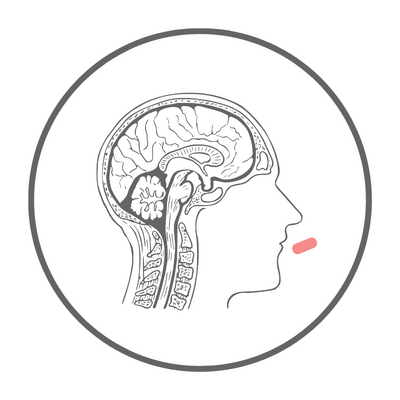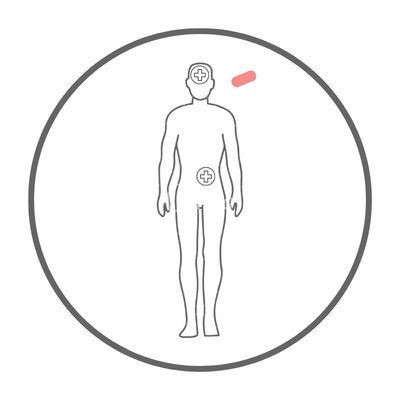國際期刊


國際期刊
-
2024 | n-Butylidenephthalide recovered calcium homeostasis to ameliorate neurodegeneration of motor neurons derived from amyotrophic lateral sclerosis iPSCs
Article Authors Metrics Comments Media Coverage Peer Review Abstract Introduction Methods Results Discussion Conclusion Supporting information References Reader Comments Figures Abstract Amyotrophic lateral sclerosis (ALS) is an incurable neurodegenerative disease that causes muscle atrophy and primarily targets motor neurons (MNs). Approximately 20% of familial ALS cases are caused by gain-of-function mutations in superoxide dismutase 1 (SOD1), leading to MN degeneration and ion channel dysfunction. Previous studies have shown that n-Butylidenephthalide (BP) delays disease progression and prolongs survival in animal models of ALS. However, no studies have been conducted on models from human sources. Herein, we examined the protective efficacy of BP on MNs derived from induced pluripotent stem cells (iPSCs) of an ALS patient harboring the SOD1G85R mutation as well as on those derived from genetically corrected iPSCs (SOD1G85G). Our results demonstrated that the motor neurons differentiated from iPSC with SOD1G85R mutation exhibited characteristics of neuron degeneration (as indicated by the reduction of neurofilament expression) and ion channel dysfunction (in response to potassium chloride (KCl) and L-glutamate stimulation), in contrast to those derived from the gene corrected iPSC (SOD1G85G). Meanwhile, BP treatment effectively restored calcium ion channel function by reducing the expression of glutamate receptors including glutamate ionotropic receptor AMPA type subunit 3 (GluR3) and glutamate ionotropic receptor NMDA type subunit 1 (NMDAR1). Additionally, BP treatment activated autophagic pathway to attenuate neuron degeneration. Overall, this study supports the therapeutic effects of BP on ALS patient-derived neuron cells, and suggests that BP may be a promising candidate for future drug development.
-
2024 | Engineered Exosomes Containing microRNA-29b-2 and Targeting the Somatostatin Receptor Reduce Presenilin 1 Expression and Decrease the β-Amyloid Accumulation in the Brains of Mice with Alzheimer’s Disease
The engineered exosomes, containing miR29b-2 and expressing SST and CD47, were produced by gene-modified dendritic cells and used in the subsequent experiments. In comparison with CD47-CCK exosomes, CD47-SST exosomes showed a more significant increase in delivery efficiency. In addition, CD47-SST exosomes led to a higher delivery level of exosomes to the brains of nude mice when administered intravenously. Moreover, it was found that the miR29b-2-loaded CD47-SST exosomes could effectively reduce PSEN1 in translational levels, which resulted in an inhibition of beta-amyloid oligomers production both in the cell model and in the 3xTg-AD animal model. Conclusion: Our results demonstrated the feasibility of the designed engineered exosomes. The application of this exosomal nanocarrier platform can be extended to the delivery of other oligonucleotide drugs to specific tissues for the treatment of diseases while evading the immune system.
-
2023 | Targeting PSEN1 by lnc-CYP3A43-2/miR-29b-2-5p to Reduce β Amyloid Plaque Formation and Improve Cognition Function
Presenilin-1 (PSEN1) is a crucial subunit within the γ-secretase complex and regulates β-amyloid (Aβ) production. Accumulated evidence indicates that n-butylidenephthalide (BP) acts effectively to reduce Aβ levels in neuronal cells that are derived from trisomy 21 (Ts21) induced pluripotent stem cells (iPSCs). However, the mechanism underlying this effect remains unclear. This article aims to investigate the possible mechanisms through which BP ameliorates the development of Alzheimer’s disease (AD) and verify the effectiveness of BP through animal experiments. Results from RNA microarray analysis showed that BP treatment in Ts21 iPSC-derived neuronal cells reduced long noncoding RNA (lncRNA) CYP3A43-2 levels and increased microRNA (miR)-29b-2-5p levels. Bioinformatics tool prediction analysis, biotin-labeled miR-29b-2-5p pull-down assay, and dual-luciferase reporter assay confirmed a direct negative regulatory effect for miRNA29b-2-5p on lnc-RNA-CYP3A43-2 and PSEN1. Moreover, BP administration improved short-term memory and significantly reduced Aβ accumulation in the hippocampus and cortex of 3xTg-AD mice but failed in miR-29b-2-5p mutant mice generated by CRISP/Cas9 technology. In addition, analysis of brain samples from patients with AD showed a decrease in microRNA-29b-2-5p expression in the frontal cortex region. Our results provide evidence that the LncCYP3A43-2/miR29-2-5p/PSEN1 network might be involved in the molecular mechanisms underlying BP-induced Aβ reduction.
-
2022 | Interstitial Control-Released Polymer Carrying a Targeting Small-Molecule Drug Reduces PD-L1 and MGMT Expression in Recurrent High-Grade Gliomas with TMZ Resistance
This study reports a potential new drug—Cerebraca wafer—that is designed to deliver its active pharmaceutical ingredient, (Z)-n-butylidenephthalide (BP), directly into the surgical cavity created when a brain tumor is resected. The therapeutic mechanism of Cerebraca wafer was shown to involve the following: (1) an IC50 of BP against tumor stem cells four times lower than that of bis-chloroethylnitrosourea (BCNU); (2) a synergistic effect between BP and temozolomide (TMZ), as demonstrated by a reduction in O6-methylguanine-DNA-methyltransferase (MGMT) expression level; (3) BP inhibition of programmed cell death-ligand 1 (PD-L1) protein levels, thereby activating T-cell cytotoxicity and increasing interferon-gamma (IFN-γ) secretion. The implantation of Cerebraca wafer is safe, no drug-related adverse events (AEs) and serious AEs (SAEs) were found. The median overall survival (OS) of patients receiving high-dose Cerebraca wafer have exceeded 17.4 months, and a 100% progression-free survival (PFS) rate at six month was achieved. In sum, these findings demonstrate that the Cerebraca wafer has superior therapeutic effects to Gliadel wafer in recurrent high-grade gliomas.
-
2022 | Biodegradable Controlled-release Polymer Containing Butylidenephthalide to Treat a Recurrent Cervical Spine Glioblastoma with Promising Result: a Compassionate Trial Report
Intramedullary spinal glioblastoma multiforme (GBM) tends to recur within 11 months of surgical resection, even after adjuvant chemoradiation therapy. Treatment options for recurrent spinal GBM are often limited. (Z)-n-butylidenephthalide [(Z)-BP] is a natural compound that induces apoptosis, antiproliferation, anti-invasion and antistemness effects in GBM cells. The Cerebraca wafer consists of (Z)-BP within a biodegradable wafer that can be implanted in the parenchyma of the central nervous system to treat high-grade glioma. We present a 44-year-old woman with a recurrent spinal GBM who underwent microscopic surgical tumor excision under fluorescein sodium guidance and intraoperative neurophysiologic monitoring. Four Cerebraca wafers were implanted into the cord and intradural space during the operation. MRI revealed that both tumor volume and spinal cord edema had decreased 4 days after surgery; both had substantially decreased 16 months after surgery. Neurologic functions and quality of life were improved after salvage therapy. No adverse events were reported. Cerebraca wafer implantation during surgical re-excision of spinal GBM may be a novel therapeutic approach for reduction of the tumor size and subsequent spinal cord edema with no toxicity to the spinal cord.
-
2022 | Targeting the Axl and mTOR Pathway Synergizes Immunotherapy and Chemotherapy to Butylidenephthalide in a Recurrent GBM
The role of inherent tumor heterogeneity and an immunosuppressive microenvironment in therapeutic resistance has been determined to be of importance for the better management of glioblastoma multiforme (GBM). Some studies have suggested that combined drugs with divergent mechanisms may be promising in treating recurrent GBM. Methods. Intracranial sustained (Z)-n-butylidenephthalide [(Z)-BP] delivery through Cerebraca Wafers (CWs) to eliminate unresectable brain tumors was combined with the administration of temozolomide (TMZ), pembrolizumab, and cytokine-induced killer (CIK) cells for treating a patient with recurrent glioblastoma. Neurological adverse events and wound healing delay were monitored for estimating tolerance and efficacy. Response Assessment in Neuro-Oncology criteria were applied to evaluate progression-free survival (PFS); further, the molecular characteristics of GBM tissues were analyzed, and the underlying mechanism was investigated using primary culture. Results. Intracerebral (Z)-BP in residual tumors could not only inhibit cancer stem cells but also increase interferon gamma levels in serum, which then led to the regression of GBM and an immune-responsive microenvironment. Targeting receptor tyrosine kinases, including Axl and epidermal growth factor receptor (EGFR), and inhibiting the mechanistic target of rapamycin (mTOR) through (Z)-BP were determined to synergize CIK cells in the presence of pembrolizumab and TMZ in recurrent GBM. Therefore, this well-tolerated regimen could simultaneously block multiple cancer pathways, which allowed extended PFS and improved quality of life for 22 months. Conclusion. Given the several unique functions of (Z)-BP, greater sensitivity of chemotherapy and the synergism of pembrolizumab and CIK cells could have affected the excellent prognosis seen in this patient with recurrent GBM.
-
2022 | Anti-Excitotoxic Effects of N-Butylidenephthalide Revealed by Chemically Insulted Purkinje Progenitor Cells Derived from SCA3 iPSCs
Spinocerebellar ataxia type 3 (SCA3) is characterized by the over-repetitive CAG codon in the ataxin-3 gene (ATXN3), which encodes the mutant ATXN3 protein. The pathological defects of SCA3 such as the impaired aggresomes, autophagy, and the proteasome have been reported previously. To date, no effective treatment is available for SCA3 disease. This study aimed to study anti-excitotoxic effects of n-butylidenephthalide by chemically insulted Purkinje progenitor cells derived from SCA3 iPSCs. We successfully generated Purkinje progenitor cells (PPs) from SCA3 patient-derived iPSCs. The PPs, expressing both neural and Purkinje progenitor’s markers, were acquired after 35 days of differentiation. In comparison with the PPs derived from control iPSCs, SCA3 iPSCs-derived PPs were more sensitive to the excitotoxicity induced by quinolinic acid (QA). The observations of QA-treated SCA3 PPs showing neural degeneration including neurite shrinkage and cell number decrease could be used to quickly and efficiently identify drug candidates. Given that the QA-induced neural cell death of SCA3 PPs was established, the activity of calpain in SCA3 PPs was revealed. Furthermore, the expression of cleaved poly (ADP-ribose) polymerase 1 (PARP1), a marker of apoptotic pathway, and the accumulation of ATXN3 proteolytic fragments were observed. When SCA3 PPs were treated with n-butylidenephthalide (n-BP), upregulated expression of calpain 2 and concurrent decreased level of calpastatin could be reversed, and the overall calpain activity was accordingly suppressed. Such findings reveal that n-BP could not only inhibit the cleavage of ATXN3 but also protect the QA-induced excitotoxicity from the Purkinje progenitor loss.
-
2021 | Pancreatic Adenocarcinoma Therapeutics Targeting RTK and TGF Beta Receptor
Despite the improved overall survival rates in most cancers, pancreatic cancer remains one of the deadliest cancers in this decade. The rigid microenvironment, which majorly comprises cancer-associated fibroblasts (CAFs), plays an important role in the obstruction of pancreatic cancer therapy. To overcome this predicament, the signaling of receptor tyrosine kinases (RTKs) and TGF beta receptor (TGFβR) in both pancreatic cancer cell and supporting CAF should be considered as the therapeutic target. The activation of receptors has been reported to be aberrant to cell cycle regulation, and signal transduction pathways, such as growth-factor induced proliferation, and can also influence the apoptotic sensitivity of tumor cells. In this article, the regulation of RTKs/TGFβR between pancreatic ductal adenocarcinoma (PDAC) and CAFs, as well as the RTKs/TGFβR inhibitor-based clinical trials on pancreatic cancer are reviewed.
-
2021 | n-Butylidenephthalide Modulates Autophagy to Ameliorate Neuropathological Progress of Spinocerebellar Ataxia Type 3 through mTOR Pathway
Spinocerebellar ataxia type 3 (SCA3), a hereditary and lethal neurodegenerative disease, is attributed to the abnormal accumulation of undegradable polyglutamine (polyQ), which is encoded by mutated ataxin-3 gene (ATXN3). The toxic fragments processed from mutant ATXN3 can induce neuronal death, leading to the muscular incoordination of the human body. Some treatment strategies of SCA3 are preferentially focused on depleting the abnormal aggregates, which led to the discovery of small molecule n-butylidenephthalide (n-BP). n-BP-promoted autophagy protected the loss of Purkinje cell in the cerebellum that regulates the network associated with motor functions. We report that the n-BP treatment may be effective in treating SCA3 disease. n-BP treatment led to the depletion of mutant ATXN3 with the expanded polyQ chain and the toxic fragments resulting in increased metabolic activity and alleviated atrophy of SCA3 murine cerebellum. Furthermore, n-BP treated animal and HEK-293GFP-ATXN3-84Q cell models could consistently show the depletion of aggregates through mTOR inhibition. With its unique mechanism, the two autophagic inhibitors Bafilomycin A1 and wortmannin could halt the n-BP-induced elimination of aggregates. Collectively, n-BP shows promising results for the treatment of SCA3.
-
2020 | Liposome Consolidated with Cyclodextrin Provides Prolonged Drug Retention Resulting in Increased Drug Bioavailability in Brain
Although butylidenephthalide (BP) is an efficient anticancer drug, its poor bioavailability renders it ineffective for treating drug-resistant brain tumors. However, this problem is overcome through the use of noninvasive delivery systems, including intranasal administration. Herein, the bioavailability, drug stability, and encapsulation efficiency (EE, up to 95%) of BP were improved by using cyclodextrin-encapsulated BP in liposomal formulations (CDD1). The physical properties and EE of the CDD1 system were investigated via dynamic light scattering, transmission electron microscopy, UV–Vis spectroscopy, and nuclear magnetic resonance spectroscopy. The cytotoxicity was examined via MTT assay, and the cellular uptake was observed using fluorescence microscopy. The CDD1 system persisted for over 8 h in tumor cells, which was a considerable improvement in the retention of the BP-containing cyclodextrin or the BP-containing liposomes, thereby indicating a higher BP content in CDD1. Nanoscale CDD1 formulations were administered intranasally to nude mice that had been intracranially implanted with temozolomide-resistant glioblastoma multiforme cells, resulting in increased median survival time. Liquid chromatography–mass spectrometry revealed that drug biodistribution via intranasal delivery increased the accumulation of BP 10-fold compared to oral delivery methods. Therefore, BP/cyclodextrin/liposomal formulations have potential clinical applications for treating drug-resistant brain tumors.
-
2020 | Human-Induced Pluripotent Stem Cells and Herbal Small-Molecule Drugs for Treatment of Alzheimer’s Disease
Alzheimer’s disease (AD) is characterized by extracellular amyloid plaques composed of the β-amyloid peptides and intracellular neurofibrillary tangles and associates with progressive declines in memory and cognition. Several genes play important roles and regulate enzymes that produce a pathological accumulation of β-amyloid in the brain, such as gamma secretase (γ-secretase). Induced pluripotent stem cells from patients with Alzheimer’s disease with different underlying genetic mechanisms may help model different phenotypes of Alzheimer’s disease and facilitate personalized drug screening platforms for the identification of small molecules. We also discuss recent developments by γ-secretase inhibitors and modulators in the treatment of AD. In addition, small-molecule drugs isolated from Chinese herbal medicines have been shown effective in treating Alzheimer’s disease. We propose a mechanism of small-molecule drugs in treating Alzheimer’s disease. Combining therapy with different small-molecule drugs may increase the chance of symptomatic treatment. A customized strategy tailored to individuals and in combination with therapy may be a more suitable treatment option for Alzheimer’s disease in the future.
-
2019 | Epigenetic Targeting DNMT1 of Pancreatic Ductal Adenocarcinoma Using Interstitial Control Release Biodegrading Polymer Reduced Tumor Growth Through Hedgehog Pathway Inhibition
Annually, 48,000 people die from pancreatic ductal adenocarcinoma (PDAC), ranking it the fourth among cancer-related deaths in the United States. Currently, anti-cancer drugs are not effective against PDAC, and only extends survival by 3 months. Aberrant DNA methylation has been shown to play an important role during carcinogenesis in PDAC, with approximately 80% of tumor overexpressing the DNA methyltransferase 1 (DNMT1) protein. In the present study, we used DNMTs as a screening platform to find a new DNMT inhibitor, n-butylidenephthalide (n-BP), which is identified from a Chinese herbal drug. n-BP could inhibit DNMT1 expression in both dose-dependent and time-dependent manner. It also displays an effect in suppressing growth of PDAC cells and inducing cell cycle arrest at G0/G1 phase leading apoptosis. Growth suppression can be restored by the overexpression of DNMT1 in PDAC cells. Furthermore, we found n-BP-mediated DNMT1 suppression influenced the protein stability rather than changing the RNA expression. Through microarray studies, we found that the patched domain contained 4 (PTCHD4) is the potential downstream gene of DNMT1. Following silencing of PTCHD4 expression by siRNA, n-BP decreased tumor growth inhibition. Finally, in vivo, two animal models were used to evaluate the efficacy and survival after n-BP treatment by interstitial control release polymer delivery. The results show that n-BP could effectively inhibit PDAC tumor volume growth and extend animal survival. In summary, n-BP may inhibit the growth of human PDAC cells though reducing DNMT1 and increasing the expression of PTCHD4 both in vitro and in vivo.
-
2018 | Migration/Invasion of Malignant Gliomas and Implications for Therapeutic Treatment
Malignant tumors of the central nervous system (CNS) are among cancers with the poorest prognosis, indicated by their association with tumors of high-level morbidity and mortality. Gliomas, the most common primary CNS tumors that arise from neuroglial stem or progenitor cells, have estimated annual incidence of 6.6 per 100,000 individuals in the USA, and 3.5 per 100,000 individuals in Taiwan. Tumor invasion and metastasis are the major contributors to the deaths in cancer patients. Therapeutic goals including cancer stem cells (CSC), phenotypic shifts, EZH2/AXL/TGF-β axis activation, miRNAs and exosomes are relevant to GBM metastasis to develop novel targeted therapeutics for GBM and other brain cancers. Herein, we highlight tumor metastasis in our understanding of gliomas, and illustrate novel exosome therapeutic approaches in glioma, thereby paving the way towards innovative therapies in neuro-oncology.
-
2018 | Advances in Patient-Specific Induced Pluripotent Stem Cells Shed Light on Drug Discovery for Amyotrophic Lateral Sclerosis
Induced pluripotent stem cells (iPSCs), which are generated through reprogramming adult somatic cells by expressing specific transcription factors, can differentiate into derivatives of the three embryonic germ layers and accelerate rapid advances in stem cell research. Neurological diseases such as amyotrophic lateral sclerosis (ALS) have benefited enormously from iPSC technology. This approach can be particularly important for creating iPSCs from patients with familial or sporadic forms of ALS. Motor neurons differentiated from the ALS-patient-derived iPSC can help to determine the relationship between cellular phenotype and genotype. Patient-derived iPSCs facilitate the development of new drugs and/or drug screening for ALS treatment and allow the exploration of the possible mechanism of ALS disease. In this article, we reviewed ALS-patient-specific iPSCs with various genetic mutations, progress in drug development for ALS disease, functional assays showing the differentiation of iPSCs into mature motor neurons, and promising biomarkers in ALS patients for the evaluation of drug candidates.
-
2018 | Butylidenephthalide Abrogates the Myofibroblasts Activation and Mesenchymal Transdifferentiation in Oral Submucous Fibrosis
Oral submucous fibrosis (OSF) is a premalignant disorder in the oral cavity, and areca nut chewing habit has been implicated in the persistent activation of myofibroblasts and the subsequent fibrosis. Therefore, it is critical to ameliorate the excessive activities of myofibroblasts prior to the malignant transformation of OSF. In the current study, we evaluated the cytotoxicity of butylidenephthalide (BP), a major phthalide ingredient of Angelica sinensis, in fibrotic buccal mucosal fibroblasts (fBMFs) as well as various myofibroblast hallmarks, including the phenotypical characteristics and fibrosis-related markers. Our results demonstrated that myofibroblast activities, including collagen gel contraction, migration, invasion and wound healing abilities were inhibited in response to BP. The expression levels of myofibroblast marker, α-smooth muscle actin (α-SMA), fibronectin and type 1 collagen A1 were decreased after exposure of BP. Moreover, we found that the EMT-related markers, Twist, Snail and ZEB1 were all downregulated after BP treatment. Most importantly, our findings demonstrated that BP impeded the binding of Snail to the E-box region in the α-SMA promoter, which may lead to inhibition of the arecoline-induced myofibroblast activities. Collectively, our data indicated that BP reduced numerous myofibroblast features in fBMFs and hindered the binding of Snail to α-SMA, thereby may function as an effective and natural antifibrosis compound.
-
2017 | Human Olfactory Ensheathing Cell Transplantation Improves Motor Function in a Mouse Model of Type 3 Spinocerebellar Ataxia
Spinocerebellar ataxia (SCA) is a progressive neurodegenerative disease that affects the cerebellum and spinal cord. Among the 40 types of SCA, SCA type 3 (SCA3), also referred to as Machado–Joseph disease, is the most common. In the present study, we investigated the therapeutic effects of intracranial transplantation of human olfactory ensheathing cells (hOECs) in the ATXN3-84Q mouse model of SCA3. Motor function begins to decline in ATXN3-84Q transgenic mice at approximately 13 weeks of age. ATXN3-84Q mice that received intracranial hOEC transplantation into the dorsal raphe nucleus of the brain exhibited significant improvements in motor function, as measured by the rotarod performance test and footprint pattern analysis. In addition, intracranial hOEC transplantation alleviated cerebellar inflammation, prohibited Purkinje cells from dying, and enhanced the neuroplasticity of cerebellar Purkinje cells. The protein levels of tryptophan hydroxylase 2, the rate-limiting enzyme for serotonin synthesis in the cerebellum, and ryanodine receptor (RYR) increased in mice that received intracranial hOEC transplantation. Because both serotonin and RYR can enhance Purkinje cell maturation, these effects may account for the therapeutic benefits mediated by intracranial hOEC transplantation in SCA3 mice. These results indicate that intracranial hOEC transplantation has potential value as a novel strategy for treating SCA3.
-
2017 | n-Butylidenephthalide Regulated Tumor Stem Cell Genes EZH2/AXL and Reduced Its Migration and Invasion in Glioblastoma
Glioblastoma (GBM) is one of the most common and aggressive types of brain tumor. Due to its highly recurrent rate and poor prognosis, the overall survival time with this type of tumor is only 20–21 months. Recent knowledge suggests that its recurrence is in part due to the presence of cancer stem cells (CSCs), which display radioresistant, chemoresistant, self-renewal and tumorigenic potential. Enhancers of Zeste 2 (EZH2) and AXL receptor tyrosine kinase (AXL) are both highly expressed in GBM. Additionally, they are an essential regulator involved in CSCs maintenance, migration, invasion, epithelial-to-mesenchymal transition (EMT), stemness, metastasis and patient survival. In this study, we used a small molecule, n-butylidenephthalide (BP), to assess the anti-GBM stem-like cells potential, and then tried to find out the associated genes involved with regulation in migration and invasion. We demonstrated that BP reduced the expression of AXL and stemness related genes in a dose-dependent manner. The migratory and invasive capabilities of GBM stem-like cells could be reduced by AXL/EZH2. Finally, in the overexpression of AXL, EZH2 and Sox2 by transfection in GBM stem-like cells, we found that AXL/EZH2/TGF-β1, but not Sox2, might be a key regulator in tumor invasion, migration and EMT. These results might help in the development of a new anticancer compound and can be a target for treating GBM.
-
2016 | Autophagic Down-regulation in Motor Neurons Remarkably Prolongs the Survival of ALS Mice
Amyotrophic lateral sclerosis (ALS) is a lethal degenerating disease, characterized by progressive muscular atrophy without any effective treatment. Here, we demonstrated the efficacy of abrograting autophagy in motor neurons (MN) by treatment with n-butylidenephthalide (n-BP) in ALS transgenic mice (SOD1G93A). Pre-symptomatic oral administration of 250 mg/kg/bid n-BP significantly prolonged the survival period (203.9 ± 18.3 days), improved motor function, and attenuated MN loss compared to vehicle control (126.4 ± 7.2 days). This prolonged survival of ALS mice is much more robust than that reported with riluzole (140 days), which is an approved clinical therapy for ALS. The therapeutic mechanism targeted by n-BP involved the autophagic pathway as evidenced by decreased LC3-II expression (a biomarker of autophagy), enhanced mTOR levels, and attenuated autophagic activity, altogether increasing MN survival in a dose-dependent manner. This result was also confirmed by double transgenic mice (SOD1G93A:LC3-GFP) which showed that oral administration of n-BP reduced GFP density and decreased caspase-3 expression. In addition, electron microscopy revealed that n-BP administration not only decreased autophagosome number but also reduced morphological dysfunction of mitochondria. In summary, these results indicate that down-regulation of autophagy activation via n-BP may pose as a therapeutic regimen for ALS and relevant neurodegenerative diseases.
-
2016 | The Role of Butylidenephthalide in Targeting the Microenvironment Which Contributes to Liver Fibrosis Amelioration
The treatment of liver fibrosis has clinical limitations because of its multiple etiologies, such as epithelial–mesenchymal transition (EMT) promotion, cell regeneration and remodeling dysfunction, inflammatory cell activation, and scar tissue deposition. These factors might be considered as a new target for the fibrotic microenvironment, leading to increased fibrogenesis and liver fibrosis. Here, we investigate a small molecule named butylidenephthalide (BP) and its multiple effects on liver fibrosis treatment. Thioacetamide was used in vivo to induce chronic liver fibrosis. BP was administered orally in rats for a period of 2 and 4 weeks, which resulted in a significantly reduced fibrosis score (p < 0.05) and (p < 0.001), respectively. The inflammatory reaction of macrophage infiltration were reduced in the administration of BP, which led to the decrease in the transaminase levels. Moreover, we also found liver functions recovering (due to the increased serum albumin and reduced prothrombin time) where liver cells regenerated, which can be seen in the increase of Ki-67 on Oval cell. In addition, the fibrotic scar was also reduced, along with the expression of matrix metalloprotease by hepatic stellate cell. Furthermore, regarding the mechanism/study of EMT reduced by BP, the knockdown of BMP-7, which could reduce α-SMA expression, was mediated by the regulation of TGF-β, which implies its major role on EMT. Finally, in the in vivo study, BP treatment of liver fibrosis was reduced by Bmp7 knockdown in zebrafish, suggesting that BP leads to the reduction of liver fibrosis, which also depends on BMP-7 induction. These results suggest that BP had multiple targets for treating liver fibrosis in the following ways: reduction of EMT, decreasing inflammatory reaction, and liver cell proliferation. This multiple targets approach provided a new mechanism to treat liver injury and fibrosis.
-
2015 | N-butylidenephthalide Attenuates Alzheimer’s Disease-Like Cytopathy in Down Syndrome Induced Pluripotent Stem Cell-Derived Neurons
Down syndrome (DS) patients with early-onset dementia share similar neurodegenerative features with Alzheimer's disease (AD). To recapitulate the AD cell model, DS induced pluripotent stem cells (DS-iPSCs), reprogrammed from mesenchymal stem cells in amniotic fluid, were directed toward a neuronal lineage. Neuroepithelial precursor cells with high purity and forebrain characteristics were robustly generated on day 10 (D10) of differentiation. Accumulated amyloid deposits, Tau protein hyperphosphorylation and Tau intracellular redistribution emerged rapidly in DS neurons within 45 days but not in normal embryonic stem cell-derived neurons. N-butylidenephthalide (Bdph), a major phthalide ingredient of Angelica sinensis, was emulsified by pluronic F127 to reduce its cellular toxicity and promote canonical Wnt signaling. Interestingly, we found that F127-Bdph showed significant therapeutic effects in reducing secreted Aβ40 deposits, the total Tau level and the hyperphosphorylated status of Tau in DS neurons. Taken together, DS-iPSC derived neural cells can serve as an ideal cellular model of DS and AD and have potential for high-throughput screening of candidate drugs. We also suggest that Bdph may benefit DS or AD treatment by scavenging Aβ aggregates and neurofibrillary tangles.
-
2014 | Brain Tumor Senescence Might be Mediated by Downregulation of S-phase Kinase-associated Protein 2 via Butylidenephthalide Leading to Decreased Cell Viability
Developing an effective drug for treating human glioblastoma multiform (GBM) has been investigated persistently. A pure compound butylidenephthalide (BP), isolated from Angelica sinensis, has been shown the activities to arrest the growth and initiate apoptosis of GBM in our previous reports. In this study, we further demonstrated that BP treatment accelerates the cell senescence in a dose-dependent manner in vitro and in vivo. S-phase kinase-associated protein 2 (Skp2), a proto-oncogene, is generally upregulated in cancer. We found that it was downregulated in BP-treated GBM cells. The downregulation of Skp2 is parallel with increasing p16 and p21 expression which causes G0/G1 arrest and tumor cell senescence. We also found that restoring the Skp2 protein level by exogenous overexpression prevents the BP-induced cell senescence. Therefore, the linkage between cell senescence and Skp2 expression is strengthened. Promoter binding analysis further detailed that the BP-mediated SP1 reduction might involve in the Skp2 downregulation. In summary, these results emphasize that BP-triggered senescence in GBM cells is highly associated with its control on Skp2 regulation.
-
2013 | The Methanol Extract of Angelica sinensis Induces Cell Apoptosis and Suppresses Tumor Growth in Human Malignant Brain Tumors
Glioblastoma multiforme (GBM) is a highly vascularized and invasive neoplasm. The methanol extract of Angelica sinensis (AS-M) is commonly used in traditional Chinese medicine to treat several diseases, such as gastric mucosal damage, hepatic injury, menopausal symptoms, and chronic glomerulonephritis. AS-M also displays potency in suppressing the growth of malignant brain tumor cells. The growth suppression of malignant brain tumor cells by AS-M results from cell cycle arrest and apoptosis. AS-M upregulates expression of cyclin kinase inhibitors, including p16, to decrease the phosphorylation of Rb proteins, resulting in arrest at the G0-G1 phase. The expression of the p53 protein is increased by AS-M and correlates with activation of apoptosis-associated proteins. Therefore, the apoptosis of cancer cells induced by AS-M may be triggered through the p53 pathway. In in vivo studies, AS-M not only suppresses the growth of human malignant brain tumors but also significantly prolongs patient survival. In addition, AS-M has potent anticancer effects involving cell cycle arrest, apoptosis, and antiangiogenesis. The in vitro and in vivo anticancer effects of AS-M indicate that this extract warrants further investigation and potential development as a new antibrain tumor agent, providing new hope for the chemotherapy of malignant brain cancer.
-
2013 | (Z)-butylidenephthalide Restores Temozolomide Sensitivity to Temozolomide-resistant Malignant Glioma Cells by Downregulating Expression of the DNA Repair Enzyme MGMT
Temozolomide, an alkylating agent against high-grade astrocytomas such as GBM (Glioblastoma Multiforme), is the leading compound in a new class of antitumor drugs. Altered methylation by MGMT (O6-methylguanine-DNA-methyltransferase) leads to temozolomide-resistant GBM. Thus, inhibition of MGMT activity is necessary for temozolomide effectiveness. Here we show a synergistic cytotoxic effect on the GBM cell line 8901 with a low dose of (Z)-butylidenephthalide combined with temozolomide. Using CalcuSyn software to analyze the combination index of (Z)-butylidenephthalide and temozolomide, we observed significant synergism in decreasing MGMT expression. We next investigated the effect of (Z)-butylidenephthalide on a temozolomide-resistant cell line GBM22-TMZ and examined changes in MGMT. The combination of 50 μM or 100 μM (Z)-butylidenephthalide with 1,600 μM temozolomide yielded a combination index of 0.649 or 0.581 (an index < 1 indicates synergism), indicating that increasing (Z)-butylidenephthalide enhanced the synergism. In addition, (Z)-butylidenephthalide enhanced MGMT promoter methylation and decreased MGMT expression in a dose-dependent manner. Using a GBM22-TMZ xenograft tumor model, (Z)-butylidenephthalide combined with temozolomide showed significant antitumor effects compared with a single drug. Finally, a survival study with Kaplan-Meier statistical analysis demonstrated a significant benefit of the (Z)-butylidenephthalide/temozolomide combination compared to temozolomide alone. In summary, the combination of (Z)-butylidenephthalide and temozolomide shows potential clinical relevance for treating temozolomide-resistant GBM.
-
2012 | Expression of Nur77 Induced by An n-Butylidenephthalide Derivative Promotes Apoptosis and Inhibits Cell Growth in Oral Squamous Cell Carcinoma
In spite of numerous advances, the 5-year survival rate for head and neck squamous cell cancer has remained largely stagnant and few new anti-tumor drugs have been developed. PCH4, a derivative of n-butylidenephthalide, has been investigated for its anti-tumor effects on oral squamous cell carcinoma (OSCC). The aim of this study was to investigate the anti-tumor mechanism of a potential target gene, Nur77, in OSCC cells, which can be induced by PCH4 treatment. Data show that PCH4 promoted Nur77 translocation from the nucleus to the cytoplasm and induced cell apoptosis in OSCC cells. When Nur77 translocation was blocked, the degree of tumor apoptosis caused by PCH4 was significantly inhibited (p < 0.05). Within the MAPK pathway, PCH4 only induced JNK phosphorylation. Furthermore, treatment with a JNK inhibitor significantly reduced PCH4-induced apoptosis (p < 0.05) and decreased PCH4-induced Nur77 expression (p < 0.05). In a xenograft animal model, administration of PCH4 also showed anti-tumor effects. We have demonstrated that OSCC cells are sensitive to PCH4 and that Nur77 protein translocation from the nucleus to the cytoplasm might be associated with the induction of apoptosis by PCH4. These results indicate that PCH4 may serve as a potential anti-tumor drug for OSCC therapy.
-
2012 | Induction of Apoptosis Coupled to Endoplasmic Reticulum Stress in Human Prostate Cancer Cells by n-butylidenephthalide
Two human prostate cancer cell lines, PC-3 and LNCaP, were treated with BP, and subsequently evaluated for their viability and cell cycle profiles. BP caused cell cycle arrest and cell death in both cell lines. The G0/G1 phase arrest was correlated with increase levels of CDK inhibitors (p16, p21 and p27) and decrease of the checkpoint proteins. To determine the mechanisms of BP-induced growth arrest and cell death in prostate cancer cell lines, we performed a microarray study to identify alterations in gene expression induced by BP in the LNCaP cells. Several BP-induced genes, including the GADD153/CHOP, an endoplasmic reticulum stress (ER stress)-regulated gene, were identified. BP-induced ER stress was evidenced by increased expression of the downstream molecules GRP78/BiP, IRE1-α and GADD153/CHOP in both cell lines. Blockage of IRE1-α or GADD153/CHOP expression by siRNA significantly reduced BP-induced cell death in LNCaP cells. Furthermore, blockage of JNK1/2 signaling by JNK siRNA resulted in decreased expression of IRE1-α and GADD153/CHOP genes, implicating that BP-induced ER stress may be elicited via JNK1/2 signaling in prostate cancer cells. BP also suppressed LNCaP xenograft tumor growth in NOD-SCID mice. It caused 68% reduction in tumor volume after 18 days of treatment.
-
2011 | Overexpression of the Orphan Receptor Nur77 and its Translocation Induced by PCH4 May Inhibit Malignant Glioma Cell Growth and Induce Cell Apoptosis
The anti-GBM effect of PCH4 is four times more than BP. The IC50 of PCH4 on DBTRG-05MG cells was 50 µg/ml. Nur77 expression and translocation from the nucleus to the cytoplasm were important in PCH4-induced apoptosis. Furthermore, the downregulation of PCH4-induced Nur77 expression by Nur77 siRNA reduced PCH4-induced apoptosis. In addition, PCH4-induced apoptosis was associated with the JNK pathway. The JNK inhibitor, SP600125, inhibited Nur77 mRNA expression and reduced PCH4-induced apoptosis.
-
2011 | Local Interstitial Delivery of z-Butylidenephthalide by Polymer Wafers against Malignant Human Gliomas
We have shown that the natural compound z-butylidenephthalide (Bdph), isolated from the chloroform extract of Angelica sinensis, has antitumor effects. Because of the limitation of the blood-brain barrier, the Bdph dosage required for treatment of glioma is relatively high. To solve this problem, we developed a local-release system with Bdph incorporated into a biodegradable polyanhydride material, p(CPP-SA; Bdph-Wafer), and investigated its antitumor effects. On the basis of in vitro release kinetics, we demonstrated that the Bdph-Wafer released 50% of the available Bdph by the sixth day, and the release reached a plateau phase (90% of Bdph) by the 30th day. To investigate the in situ antitumor effects of the Bdph-Wafer on glioblastoma multiforme (GBM), we used 2 xenograft animal models—F344 rats (for rat GBM) and nude mice (for human GBM)—which were injected with RG2 and DBTRG-05MG cells, respectively, for tumor formation and subsequently treated subcutaneously with Bdph-Wafers. We observed a significant inhibitory effect on tumor growth, with no significant adverse effects on the rodents. Moreover, we demonstrated that the antitumor effect of Bdph on RG2 cells was via the PKC pathway, which upregulated Nurr77 and promoted its translocation from the nucleus to the cytoplasm. Finally, to study the effect of the interstitial administration of Bdph in cranial brain tumor, Bdph-Wafers were surgically placed in FGF-SV40 transgenic mice. Our Bdph-Wafer significantly reduced tumor size in a dose-dependent manner. In summary, our study showed that p(CPP-SA) containing Bdph delivered a sufficient concentration of Bdph to the tumor site and effectively inhibited the tumor growth in the glioma.
-
2011 | Butylidenephthalide Suppresses Human Telomerase Reverse Transcriptase (TERT) in Human Glioblastomas
Using electrophoretic mobility shift assays and western blotting, we showed that BP represses hTERT transcriptional activity via downregulation of Sp1 expression. Using the telomerase repeat amplification protocol, an association between BP concentration and suppression of telomerase activity, induction of human glioblastoma senescence, and inhibition of cellular proliferation was identified. This was supported by a mouse xenograft model, in which BP repressed telomerase and inhibited tumor proliferation, resulting in tumor senescence. Overexpression of hTERT restored telomerase activity in human glioblastoma cells and overcame replicative senescence.
-
2010 | Extended O6-Methylguanine Methyltransferase Promoter Hypermethylation Following n-Butylidenephthalide Combined with 1,3-Bis(2-chloroethyl)-1-nitrosourea (BCNU) on Inhibition of Human Hepatocellular Carcinoma Cell Growth
Epigenetic alteration of DNA methylation plays an important role in the regulation of gene expression associated with chemosensitivity of human hepatocellular (HCC) carcinoma cells. With the aim of improving the chemotherapeutic efficacy for HCC, the effect of the naturally occurring compound n-butylidenephthalide (BP), which is isolated from a chloroform extract of Angelica sinensis, was investigated. In both HepG2 and J5 HCC cell lines, a synergistic antiproliferative effect was observed when a low dosage of BP was combined with the chemotherapeutic drug 1,3-bis(2-chloroethyl)-1-nitrosourea (BCNU). BCNU is an alkylating agent, and it prompts us to examine one of DNA repair genes, O6-methylguanine methyltransferase (MGMT). It was evident from methylation-specific polymerase chain reaction (PCR) analysis that BP/BCNU combined treatment caused a time- and concentration-dependent enhancement of MGMT promoter methylation. Overexpression of MGMT could abolish BP-induced growth inhibition in the J5 tumor cell line as measured by colony formation assay. When BP was combined with BCNU and administered, it showed significant antitumor effects in both HepG2 and J5 xenograft tumors as compared with the use of only one of these drugs. The BCNU-induced apoptosis and inhibited MGMT protein expression in HCC cells, both in vitro and in vivo, resulting from the combination treatment of BP and BCNU suggest a potential clinical use of this compound for improving the prognosis for HCCs.
-
2008 | The Induction of Orphan Nuclear Receptor Nur77 Expression by n-Butylenephthalide as Pharmaceuticals on Hepatocellular Carcinoma Cell Therapy
N-Butylidenephthalide (BP), isolated from the chloroform extract of Angelica sinensis, has been examined for its antitumor effects on glioblastoma multiforme brain tumors; however, little is known about its antitumor effects on hepatocellular carcinoma cells. Two hepatocellular carcinoma cell lines, HepG2 and J5, were treated with either N-butylidenephthalide or a vehicle, and cell viability and apoptosis were evaluated. Apoptosis-related mRNA and proteins expressed, including orphan receptor family Nurr1, NOR-1, and Nur77, were evaluated as well as the effect of N-butylidenephthalide in an in vivo xenograft model. N-Butylidenephthalide caused growth inhibition of both the cell lines at 25 μg/ml. Furthermore, N-butylidenephthalide-induced apoptosis seems to be related to Nur77 translocation from nucleus to cytosol, which leads to cytochrome c release and caspase-3-dependent apoptosis. N-Butylidenephthalide-related tumor apoptosis was associated with phosphatidylinositol 3-kinase/protein kinase B (AKT)/glycogen synthase kinase-3β rather than the mitogen-activated protein kinase or protein kinase C pathway. Blockade of AKT activation enhanced proliferation inhibition and the induction of phosphor-Bcl-2 and Nur77 proteins. Besides, the increasing apoptosis by BP via transfection wild-type cAMP-response element-binding protein (CREB) into tumor cell was suppressed by dominant phosphorylation site mutation of CREB. This finding suggested CREB pathway was also partly involved in tumor apoptosis caused by BP. Administration of N-butylidenephthalide showed similar antitumoral effects in both HepG2 and J5 xenograft tumors. N-Butylidenephthalide induced apoptosis in hepatocellular carcinoma cells, both in vitro and in vivo, suggesting a potential clinical use of this compound for improving the prognosis of hepatocellular carcinoma cells.
-
2008 | Orphan Nuclear Receptor, Nurr-77 Was a Possible Target Gene of Butylidenephthalide Chemotherapy on Glioblastoma Multiform Brain Tumor
The natural compound n-butylidenephthalide (BP), which is isolated from the chloroform extract of Angelica sinensis, has been investigated for its antitumoral effects on glioblastoma multiform (GBM) brain tumors both in vitro and in vivo. To determine the mechanism of BP-induced growth arrest and apoptosis, we examined BP-induced changes in gene expression by microarray screening using human GBM brain tumor cells. This analysis identified several BP-inducible genes, including the nuclear receptors NOR-1, Nurr1, and Nur77. Among these genes, Nur77 is particularly interesting because it plays an important role in the apoptotic processes in various tumor cell lines. BP was able to increase Nur77 mRNA and protein expression in a time-dependent manner. After BP treatment in GBM 8401 cells, Nur77 translocated from the nucleus to the cytoplasm, the cytochrome c was released from the mitochondria, and caspase 3 became activated. Furthermore, using Nur77 promoter-luciferase assay, BP increased Nur77 was AP1 related. Inhibition of BP-induced Nur77 expression by Nur77 short interfering RNA blocked BP-induced apoptosis in GBM 8401 cells, suggesting that the induction of Nur77 negatively affected GBM 8401 cell survival. In summary, our results suggest that up-regulation of Nur77 may explain the antitumoral activity of BP in brain tumor cells.
-
2006 | The Natural Compound n-Butylidenephthalide Derived from Angelica sinensis Inhibits Malignant Brain Tumor Growth in vitro and in vivo
The naturally-occurring compound, n-butylidenephthalide (BP), which is isolated from the chloroform extract of Angelica sinensis (AS-C), has been investigated with respect to the treatment of angina. In this study, we have examined the anti-tumor effects of n-butylidenephthalide on glioblastoma multiforme (GBM) brain tumors both in vitro and in vivo. In vitro, GBM cells were treated with BP, and the effects of proliferation, cell cycle and apoptosis were determined. In vivo, DBTRG-05MG, the human GBM tumor, and RG2, the rat GBM tumor, were injected subcutaneously or intracerebrally with BP. The effects on tumor growth were determined by tumor volumes, magnetic resonance imaging and survival rate. Here, we report on the potency of BP in suppressing growth of malignant brain tumor cells without simultaneous fibroblast cytotocixity. BP up-regulated the expression of Cyclin Kinase Inhibitor (CKI), including p21 and p27, to decrease phosphorylation of Rb proteins, and down-regulated the cell-cycle regulators, resulting in cell arrest at the G0/G1 phase for DBTRG-05MG and RG2 cells, respectively. The apoptosis-associated proteins were dramatically increased and activated by BP in DBTRG-05MG cells and RG2 cells, but RG2 cells did not express p53 protein. In vitro results showed that BP triggered both p53-dependent and independent pathways for apoptosis. In vivo, BP not only suppressed growth of subcutaneous rat and human brain tumors but also, reduced the volume of GBM tumors in situ, significantly prolonging survival rate. These in vitro and in vivo anti-cancer effects indicate that BP could serve as a new anti-brain tumor drug.
-
2005 | The Antitumor Effects of Angelica sinensis on Malignant Brain Tumors In vitro and In vivo
The AS-C displays potency in suppressing growth of malignant brain tumor cells without cytotoxicity to fibroblasts. Growth suppression of malignant brain tumor cells by AS-C results from cell cycle arrest and apoptosis. AS-C can up-regulate expression of cdk inhibitors, including p21, to decrease phosphorylation of Rb proteins resulting in cell arrest at the G0-G1 phase for DBTRG-05MG and RG2 cells. The apoptosis-associated proteins are dramatically increased and activated in DBTRG-05MG cells and RG2 cells by AS-C but RG2 cells without p53 protein expression. In vitro results showed AS-C triggered both p53-dependent and p53-independent pathways for apoptosis. In in vivo studies, AS-C not only can suppress growths of malignant brain tumors of rat and human origin but also shrink the volumes of in situ GBM, significantly prolonging survivals.
-
2004 | Acetone Extract of Angelica sinensis Inhibits Proliferation of Human Cancer Cells via Inducing Cell Cycle Arrest and Apoptosis
Angelica sinensis (Oliv.) Diels, a traditional Chinese medicine, has been widely prescribed in treatment of gynecological diseases. Bio-based assays for extracts of Angelica sinensis showed that the acetone extract (AE-AS) had dose-dependently antiproliferative effect on A549, HT29, DBTRG-05MG and J5 human cancer cells. The IC50 values of AE-AS on mentioned cancer cells ranged from 35 to 50 microg/ml after 24 h of treatment. After 72 h of exposure, AE-AS (40 microg/ml) significantly reduced A549 cell proliferation to 24 +/- 3.2% of control. In A549 cells, the cell cycle analysis showed that AE-AS induced a significant increase in the number of cells in G0/G1, with a concomitant decrease in the number of cells in S phase. AE-AS-induced chromatin changes and apoptosis of A549 cells were confirmed by Hoechst 33342 DNA staining and annexin V staining. A549 cells treated with AE-AS caused activation of caspase-9 and -3, and AE-AS-induced apoptosis could be inhibited by the broad-spectrum caspase inhibitor, z-VAD-fmk. The Western blot indicated the AE-AS-triggered apoptosis is mediated via suppression of Bcl-2 oncoprotein expression rather than p53 or Bax. Besides, AE-AS decreased the levels of cdk4 protein was observed. These results indicate that the AE-AS could induce G1/S arrest and activate the mechanism of apoptosis in human cancer cells. Extracts obtained from different methods of fractionation might possess distinct bioactivity. These results prompted us to further evaluate the in vivo anticancer effects and elucidate the chemical composition profile of AE-AS.
-
2004 | Telomerase and c-myc Expression in Hepatocellular Carcinomas
hTERTmRNA was found in 47/57 (82.5%) HCC specimens using in situ hybridization. The hTERT expression paralleled telomerase activity, but hTERTmRNA regulation was not significantly associated with c-myc level (P<0.954). The DNA sequence analysis of the hTERT promoter in specimens from 17 HCC revealed 15 cases of nucleotide transition (T→C) over 5′-end of distal E-box and one case of nucleotide transversion (G→C) over 5′-end of proximal E-box. Neither the hTERT expression (P<0.890) nor c-myc level (P<0.348) were related to HCC differentiation.
-
2004 | Modulation of Human Telomerase Reverse Transcriptase in Hepatocellular Carcinoma
In 30 of 57 cases (52%), hTERT mRNA expression was associated with c-Myc protein expression. However, 16 of 57 cases (28%) showed strong hTERT mRNA detection without c-Myc protein expression, and 11 cases (19%) showed weak hTERT mRNA expression and strong c-Myc expression. Although luciferase activity was decreased between upstream 1375 bp and 776 bp, there was no significant difference between upstream 776 bp and 100 bp. Finally, there was no significant decrease in activity after transfection of the hTERT promoter-LUC construct.

